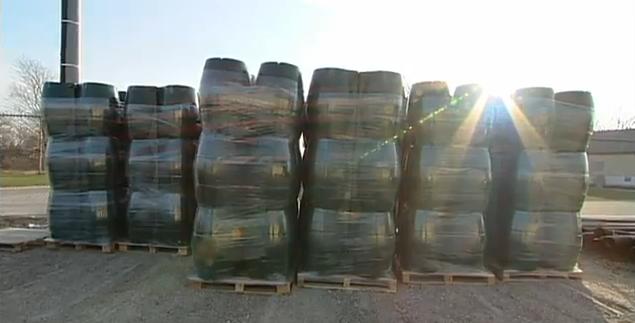
Due to increasingly severe weather and precipitation, water damage accounts for $1.7 billion in insurance claims per year on a national scale and now surpasses fire-related claims, according to the Insurance Bureau of Canada (IBC).
That shift to first place was the main driver for the Wingham Rain Barrel Study, says Robert Tremblay, IBC’s director of research. Released this week, the two-year study looked at helping communities deal with excess water using rain barrels. See a video about the project here. Water Canada spoke with Tremblay to find out more about the study.
Water Canada: Why did IBC decide to do the rain barrel study?
Robert Tremblay: We were looking at ways to remove stress on storm and sanitary infrastructure systems. Many systems are not engineered for the pattern of rain events that we see today, and, as a result, we’ve seen a significant increase in water damage claims for residential insurance.
We looked at studies from around the world, but the conclusions were always the same. In theory, rain barrels would work, but there were never enough implemented to make a significant difference to the system. We decided to test the concept on a larger scale.
Tell us about the partnership with the Township of North Huron.
We decided that the optimal size of a test community would be small-scale, about 1,000 households, so that it would be easier to measure the potential impact. We selected Wingham in the municipality of North Huron, Ontario. We were encouraged by the community’s openness and willingness to test the concept.
We distributed 1,000 rain barrels free of charge with great success. At the end of the second summer, we’d distributed 58 per cent of the barrels, which is the highest level of any project of this nature.
As part of the lessons learned, the report says that many people didn’t empty their rain barrels. During a rain event, a full rain barrel might as well not exist.
We could see from the volume of water that people weren’t emptying their rain barrels [despite educational meetings around installation and use]. We gave population of Wingham various ways to use the water: watering gardens, washing hair, et cetera. But, of course, the issue is that only a few people in the community will use the water.
In the future, barrels will be equipped with slow-release drain valve that will empty the barrel over 24 to 36 hours after rain event. We realized that if we’d had those caps involved from the beginning, we would have captured 4.6 million litres of water on average each summer. As a result, all participants in the Wingham study will receive a new drain valve to retrofit their rain barrels.
Where is the ideal place to keep a rain barrel with a slow-release valve?
The best place to put a rain barrel is under the downspout. The barrels that we’ve used came equipped with a three-foot-long hose at the bottom. By extending the barrel with the hose, the water will be released 3.5-4 feet away from the house’s foundation.
In our next program, we’ll still tell people how they can use the water they’ve collected. At least this time we can maintain the storage capacity of the barrels with the gravity valves.
The report found that the maximum potential capacity of stormwater diversion for a single event if all barrels were installed and properly used would be 205,000 litres. What were some of the other significant results of the study?
As a result of the installation of the rain barrels, 72 per cent of the downspouts were disconnected from Wingham’s stormwater infrastructure. The bulk of the reduction [of water in the system] we’ve seen is the result of the disconnections.
Have you considered doing studies on the effects of xeriscaped gardens or permeable surfaces?
It’s part of a broader program—rain barrels are just one arrow in the quiver. They cannot and will not replace the need to enhance the stormwater and sanitary systems, but they can help [alleviate the systems] as we make the necessary investments.
The next step is to take the lessons learned from Wingham, particularly the slow-release valve, and testing them. We’re planning a study to take place in a community of roughly the same size and a comparable situation in Atlantic Canada in 2012. We’ll look at other research opportunities once we have ironed out the issue of the rain barrel.












Interesting but somewhat futile and ineffective in the long term. Not too many home owners will want a mess of barrels cluttering thier yard. We need to focus on Rain Harvesting being implemented into new home construction so tanks of adequate capacity (1700 gal.)can be installed in the ground during the build. The system can then be tied into the home so the water can be utilized for toilet, laundry and outdoor purposes. Let’s copy Europe that has been doing this for 30 years. Systems can be set up for partial retention and partial use. As water rates increase payback will come quickly in rate saving. Check out http://www.graf.info . In ground systems can also be used year round in colder climates.
While rain harvesting is a good idea it does not solve the issue for existing homes and buildings. The next best idea is a simple rain barrel and of course the will of the people to use them properly.
Send me a rain barrel or two I can put them to good use!